Samsung The Frame (2024) is not just an ordinary television that you could put in the corner and forget about after two days. Here, it's immediately evident that the manufacturer focused on something beyond just displaying movies. First, the "Art" mode catches the eye – with just a few clicks, we can turn The Frame into a digital gallery, showcasing artworks that, combined with the matte panel, truly resemble a real painting in a frame. And speaking of the frame, we have the option to customize its color to perfectly match our interior. Additionally, the package includes a wall mount, allowing the TV to be hung practically "flat," which further enhances the impression of engaging with a picture rather than a typical screen. The matte panel provides excellent protection against light reflections, which, paired with high brightness (650 cd/m²), works well in full sunlight. Moreover, we have a VA panel with quite decent contrast and a refresh rate of 120 Hz, so when watching sports or playing dynamic titles, everything appears really smooth and pleasant to the eye. If we add a gaming features package – VRR, ALLM, and HGiG – it becomes clear that Samsung also thought of console and PC fans. As a result, The Frame can be both a picturesque decoration for the living room and a quite sensible gaming monitor. The aforementioned One Connect is another handy gadget – thanks to it, we can hide all cables in one place, pulling only a thin wire connecting the TV to this magical box. If we like order, this is a solution made for us. Another advantage is the Tizen system – user-friendly, fast, and full of applications. We might not find absolutely everything in it (e.g., the Tidal app), but it still offers a wide range of options for searching new streaming platforms. Of course, there’s no rose without thorns. The lack of local dimming is noticeable in dark scenes, where black becomes less defined. We also have to remember that there is only one HDMI 2.1 port, so if we want to connect more devices in 4K and 120 Hz, we might feel limited. Additionally, viewing angles are rather average, so it's better for the most important viewer (i.e., us) to sit directly in front of the TV. For Dolby Vision fans, this also won’t be the perfect choice, as The Frame only supports HDR10 and HDR10+. Moreover, the sound – like in most slim TVs – is mediocre, so it's worth considering a soundbar if we care about clearer bass and a bit deeper sound. Despite these weaker points, The Frame still leaves a great impression. It is striking, stylish, and versatile – suitable for watching the latest hits as well as displaying reproductions of paintings on the wall. If we care about a unique appearance, high brightness, and at the same time want to play something with low input lag, this model will be a home run. And although it may not be the leader in terms of cost-effectiveness or a technological "monster" in terms of picture quality, it has something that is simply likable. It’s a piece of equipment that stands out with its unique character and can fit into any interior, attracting attention both in TV mode and as a digital art gallery.
- Matching (Score)
- Our verdict
- TV appearance
- Where to buy
- Contrast and black detail
- HDR effect quality
- Factory color reproduction
- Color reproduction after calibration
- Smoothness of tonal transitions
- Image scaling and smoothness of tonal transitions
- Blur and motion smoothness
- Console compatibility and gaming features
- Input lag
- Compatibility with PC
- Viewing angles
- TV efficiency during daytime
- Details about the matrix
- TV features
- Apps
- Playing files from USB
- Sound
Samsung The Frame LS03D vs TCL C7K / QM7K 50"
Direct compare
Check the best price offer:
Samsung The Frame LS03DThe Frame / LS03D
C7K / Q7C / MQLED85K / C79K / C71K / QM7K
Available screen sizes: 50”

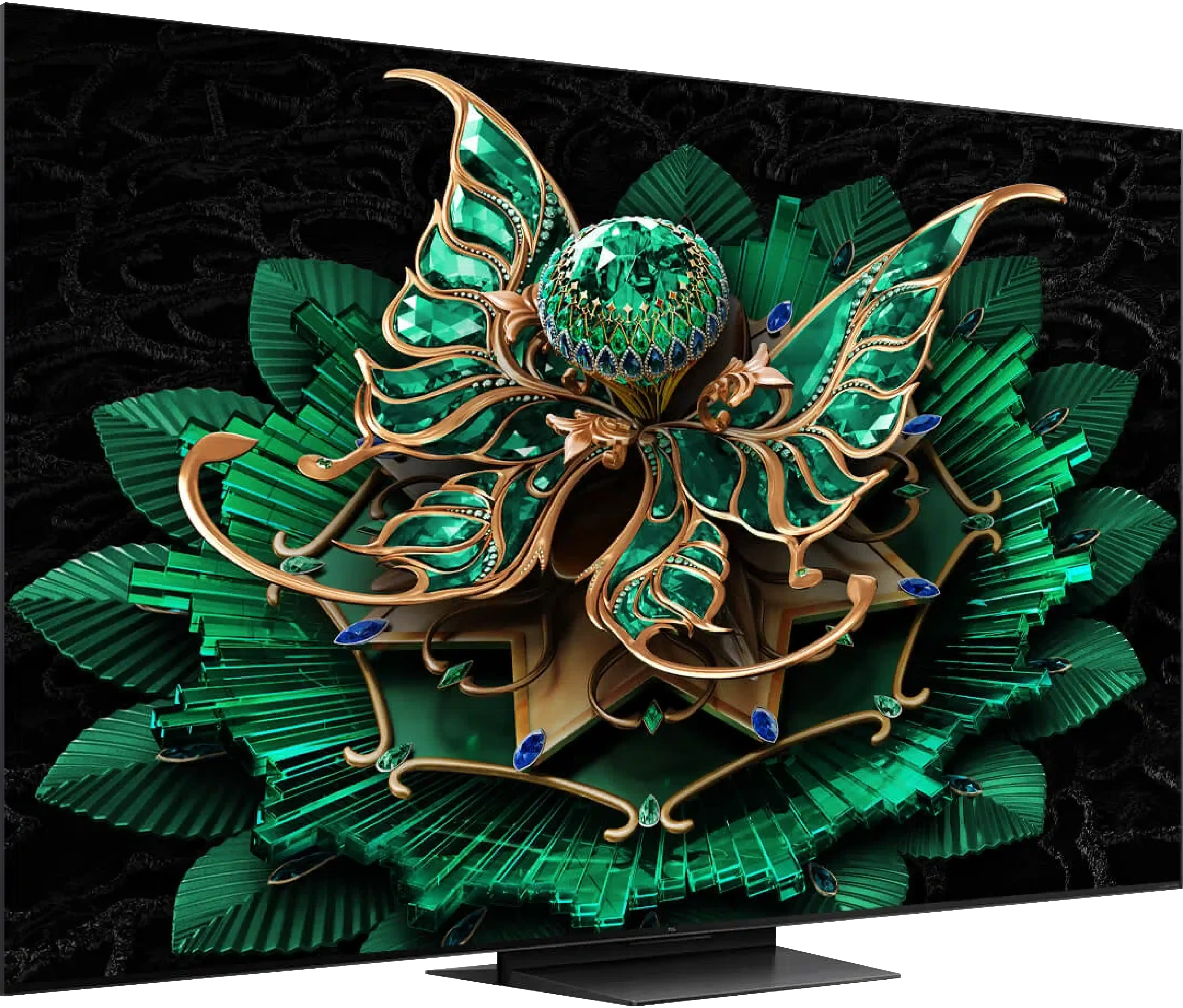
Panel type: LCD VA
Resolution: 3840x2160
System: Tizen
Model year: 2024
Complete the survey to find out the result

Panel type: LCD VA
Resolution: 3840x2160
System: Google TV
Model year: 2025
Complete the survey to find out the result

Overall rating
7.0
7.2
Movies and series in UHD quality
6.9
6.7
Classic TV, YouTube
6.5
6.5
Sports broadcasts (TV and apps)
6.2
6.6
Gaming on console
8.2
8.5
TV as a computer monitor
7.6
8.4
Watching in bright light
6.5
6.1
Utility functions
7.8
7.3
Apps
8.7
9.6
Sound quality
5.8
7.0
Complete the survey to find out what fits your preferences
Advantages
Unique design and "Art" mode - the television fits perfectly into interiors and serves as a digital frame for images
Matte screen - effectively reduces glare
Possibility of personalizing the TV frames - adapting the appearance to the interior
Dedicated wall mounts included (Value approx. 400 PLN) - the TV can be mounted almost flush to the wall
High brightness (650 cd/m²) - excellent visibility even in well-lit rooms
VA matrix - decent contrast
Good motion fluency - 120Hz*
Support for VRR, ALLM, and HGiG - a full set of gaming features
Smooth tonal transitions - one of the best results in this category among tested TVs
One Connect module - minimizes cable clutter, ensuring tidiness
Tizen system - responsive, intuitive
*Does not apply to the 43 and 50 inch variants (60Hz)
Very good black - VA panel with a large number of Mini-LED zones
High brightness in HDR - over 1000 nits
Great for gamers - HDMI 2.1, low input lag, VRR, ALLM, etc.
Good motion fluidity - 144Hz panel
Support for multiple HDR formats: HDR10, HDR10+, Dolby Vision
Google TV operating system with access to a huge app base
Pleasant sound from built-in speakers
Disadvantages
Lack of local dimming – affects the quality of black, especially in dark scenes
Average viewing angles – the image loses quality when viewed at a greater angle
Average sound quality – flat sound without depth
Limited number of HDMI 2.1 ports – only one port supports full 4K@120 Hz
No Dolby Vision – the TV only supports HDR10 and HDR10+
Google TV can work with minor lags
No USB recording and PiP features
Our verdict
There are TVs that come in for testing and you immediately think: "oh, another average one, probably like many others." And in fact… that's true. The TCL C7K doesn't try to dethrone the OLEDs, it doesn't shout from the box "revolution!". And yet, after a few days of testing, it's hard not to think: "wow, this is really good equipment." And that's exactly what the C7K is. The biggest asset of the C7K is its decent picture at a reasonable price – MiniLED and quantum dots do their job here. The colors are vibrant, the brightness is satisfactory, the contrast is impressive, and with the right settings, you can truly enjoy viewing in the best quality. The second strong point is the fluidity of motion – both in sports and in games. Support for HDMI 2.1, variable refresh rate, 144 Hz, and a whole bunch of other features make playing on this TV a pure pleasure. Additionally, there's Google TV, which – despite minor shortcomings – provides access to nearly an endless library of applications. Voice control, quick access to YouTube, Netflix, AirPlay support – everything you need for daily use is here. Are there any downsides? Sure. The Google TV system sometimes experiences moments of "hesitation," and MiniLED – like any MiniLED – can stumble on very challenging movie scenes. But those are details. After all, the C7K is a mid-range model – and in this class, it simply performs excellently. So if you are looking for a reasonably priced, modern TV with Google TV that looks good, works well, and sounds pretty decent without breaking your budget – the TCL C7K definitely deserves attention.
TV appearance






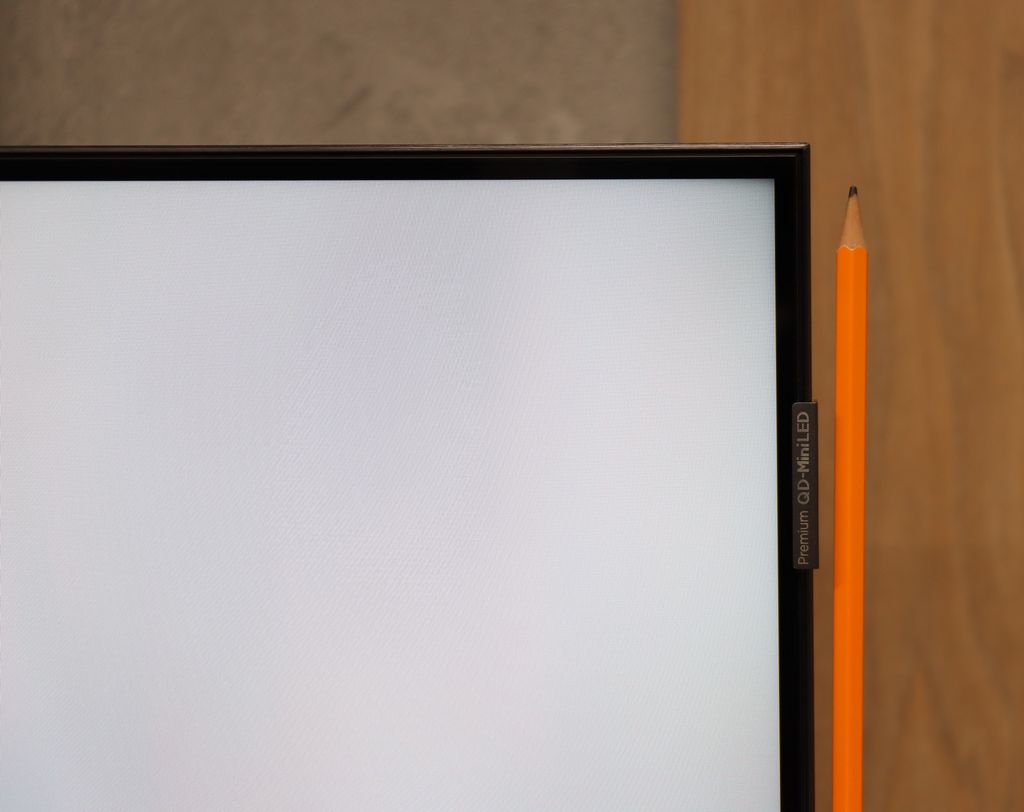
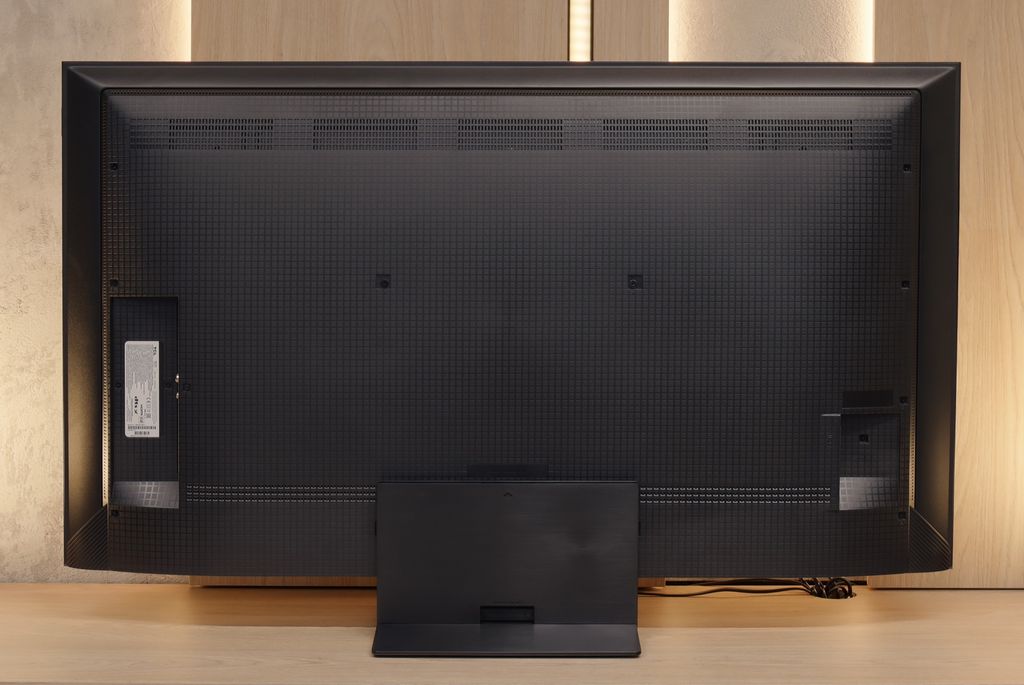
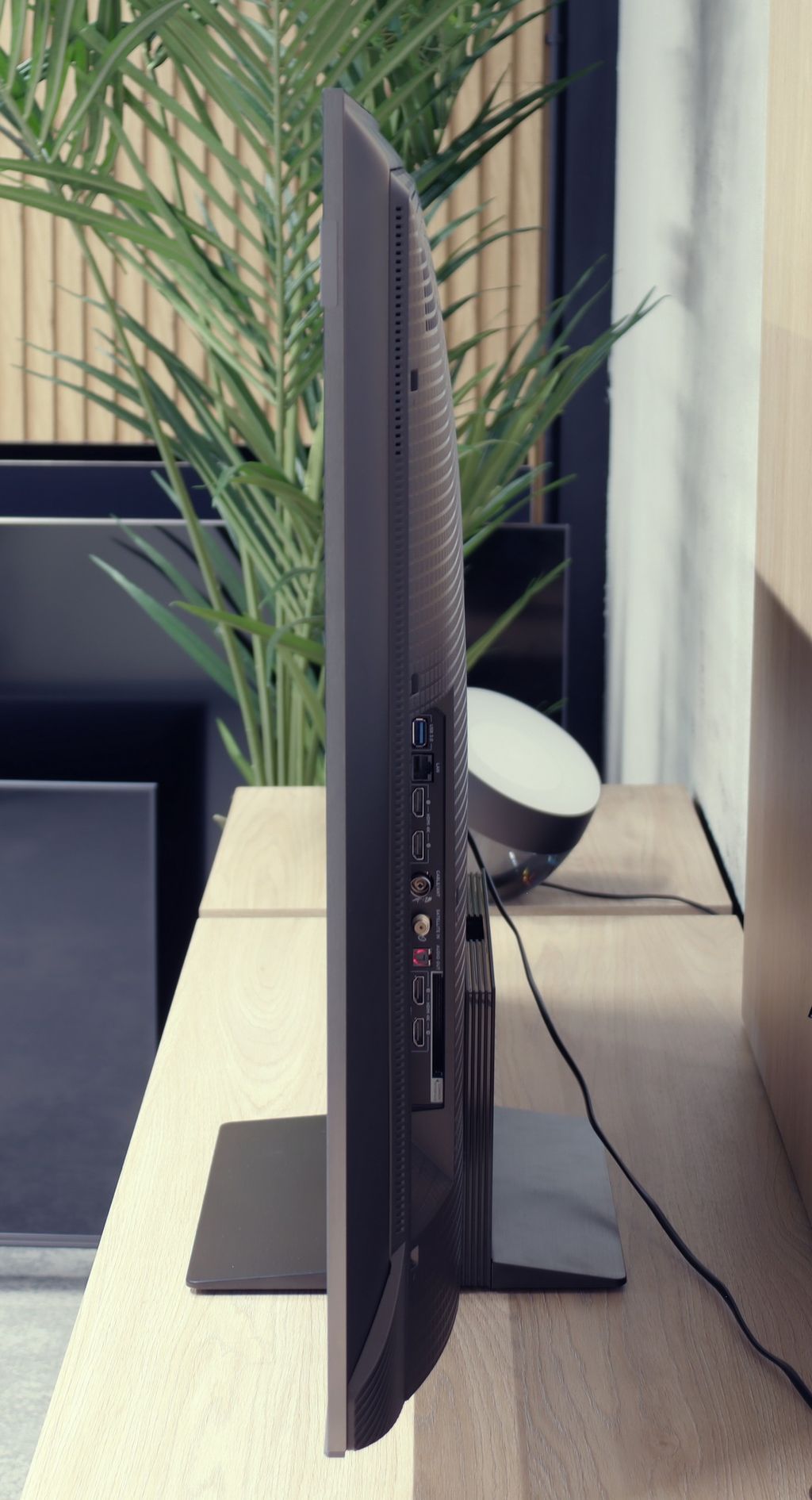
Contrast and black detail
5.6/10
7.1/10
Local dimming function: No
Local dimming function: Yes, number of zones: 336 (14 x 24)
Contrast:

Result
4,200:1

Result
4,800:1

Result
5,100:1

Result
5,300:1

Result
3,850:1

Result
161,000:1

Result
18,750:1

Result
13,150:1

Result
6,300:1

Result
4,200:1
Halo effect and black detail visibility:

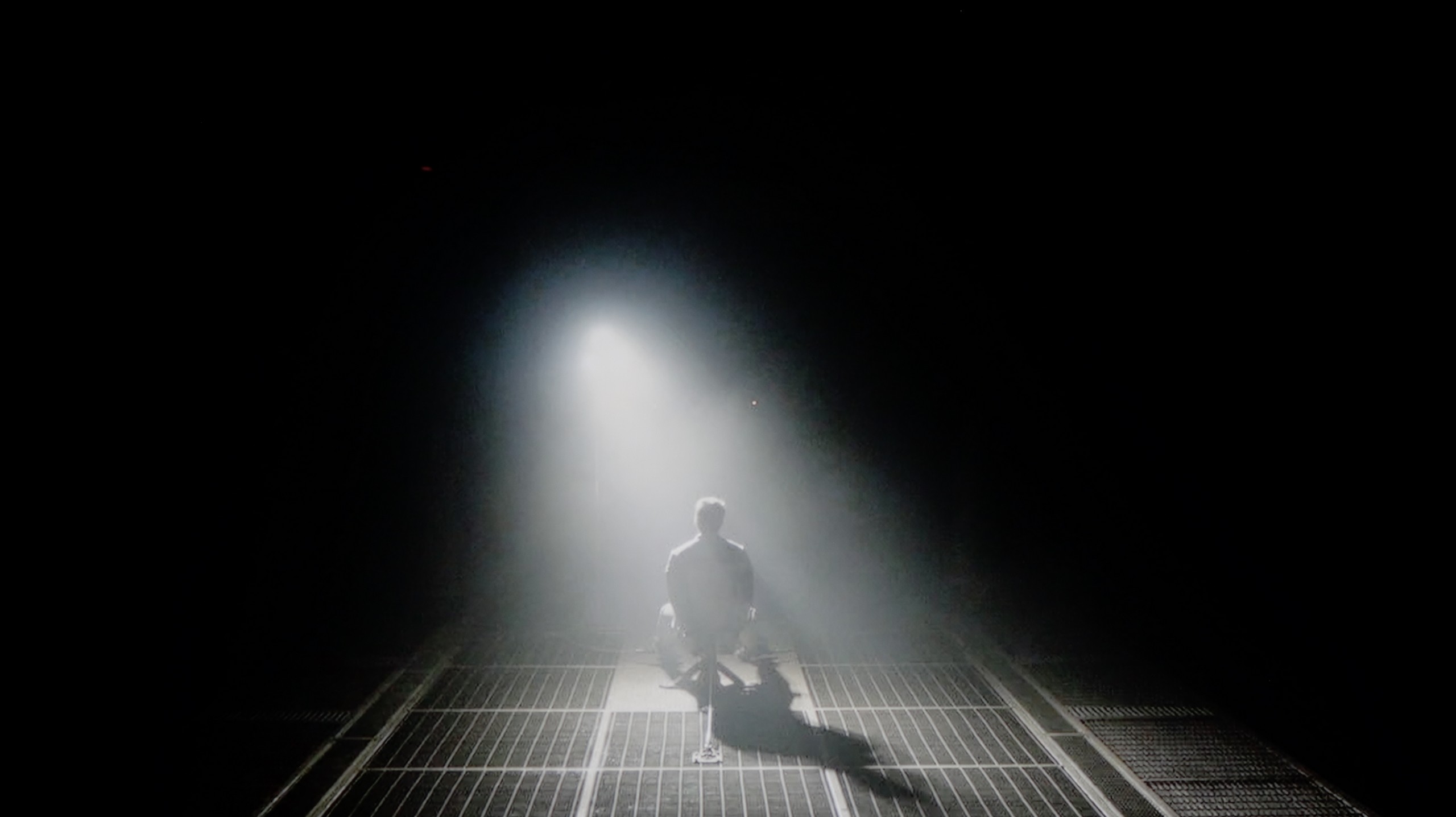
The Frame uses a VA panel, which in itself provides quite high contrast. In our tests, the results ranged from 4000 to 5000:1, which will be quite sufficient for most users. However, the lack of local dimming becomes noticeable, especially on more demanding test screens. In dark scenes, one can notice that the black has a slight navy hue. During the day or in a well-lit room, this won't be an issue, but during an evening viewing, more discerning viewers may feel a slight disappointment.
The 50-inch TCL C7K that we tested surprised us right from the start – it's the smallest model in the series, yet it comes equipped with a VA panel with MiniLED backlighting and – attention – as many as 336 dimming zones. For comparison: many significantly larger TVs from higher tiers would be eager to boast such a number. Here we have it in the 50-inch version. Sounds promising, right? So how does this translate into real movie-watching experiences? In the vast majority of tested scenes – very well. The contrast was so high that in measurements it even reached six-digit values, which in practice means very deep blacks and well-separated highlights. In scenes from movies like The Revenant or Oblivion, the effect was impressive, matching the best LCD screens in this class.
However, not everything went perfectly. Despite the impressive number of zones, their management was not always exemplary. In more complex scenes, where there are small light sources or a high level of detail, the TV had issues with the so-called halo effect (a glowing halo around bright objects) or with overly aggressive dimming of the image. In such situations, contrast could either collapse due to overexposing parts of the zones or, conversely – details in bright areas disappeared because the zones suppressed the light too much. Nevertheless, it's worth emphasizing that in the vast majority of scenes, the contrast was more than satisfactory. And considering the size of the TV and its price, the final effect will satisfy not just average users.
HDR effect quality
6.4/10
5.4/10
Luminance measurements in HDR:

Result
679 nit

Result
663 nit

Result
712 nit

Result
698 nit

Result
726 nit

Result
1051 nit

Result
185 nit

Result
454 nit

Result
200 nit

Result
836 nit
Scene from the movie “Pan” (about 2800 nits)


Scene from the movie “Billy Lynn” (about 1100 nits)


Static HDR10


Dynamic: HDR10+
Dynamic: Dolby Vision


HDR luminance chart:
TCL C7K / QM7K 50"
Luminancja HDR
Luminance of RGB colors
Samsung The Frame LS03D
Luminancja HDR
Luminance of RGB colors
The Frame really handles brightness well. With results at the level of 700 nits, bright elements on the screen look impressive and detailed, whether they illuminate the entire screen or appear as small bright spots against a dark background. In more demanding scenes, like the fourth sequence from the movie Sicario 2, the blacks perform averagely, but we already discussed that in the section regarding contrast. However, when it comes to brightness – here the TV definitely performs well. An additional advantage is the quantum dot coating, i.e., QLED technology. Thanks to it, the color palette coverage has been improved, although The Frame does not stand out in this regard compared to the competition.
TCL C7K is one of the brightest MiniLED televisions in its price range. Under the best test conditions, the screen was able to achieve over 1200 nits, resulting in impressive, and at times blindingly bright scenes. And most importantly – this is not just a theoretical measurement. In practice, the brightest parts of movies can shine with true cinematic grandeur. Home HDR cinema fans should be truly pleased.
The impression is especially great in scenes with large areas of brightness – white skies, explosions, sun reflections, or magical sunsets can surprise with the intensity of light that rarely appears in this price range.
However, things get a bit worse when more challenging scenarios appear on the screen, which have been described in terms of contrast – meaning images full of details, with small bright elements against a dark background. In such cases, the C7K often chooses to retain black at the expense of brightness. An example? Scenes from the movies Sicario 2 or Life of Pi, where small light sources (like a distant lantern) can be less visible, and details in the lights are simply dimmed or blend into the background.
For many viewers, this may be an acceptable compromise – as we achieve deep blacks and pleasant image texture. Nevertheless, it is worth being aware that the visibility of small details in bright areas is not the strongest suit of this model. It is simply a technological limitation that still exists – even with over 300 zones.
Factory color reproduction
7/10
6/10


Factory Mode
After calibration
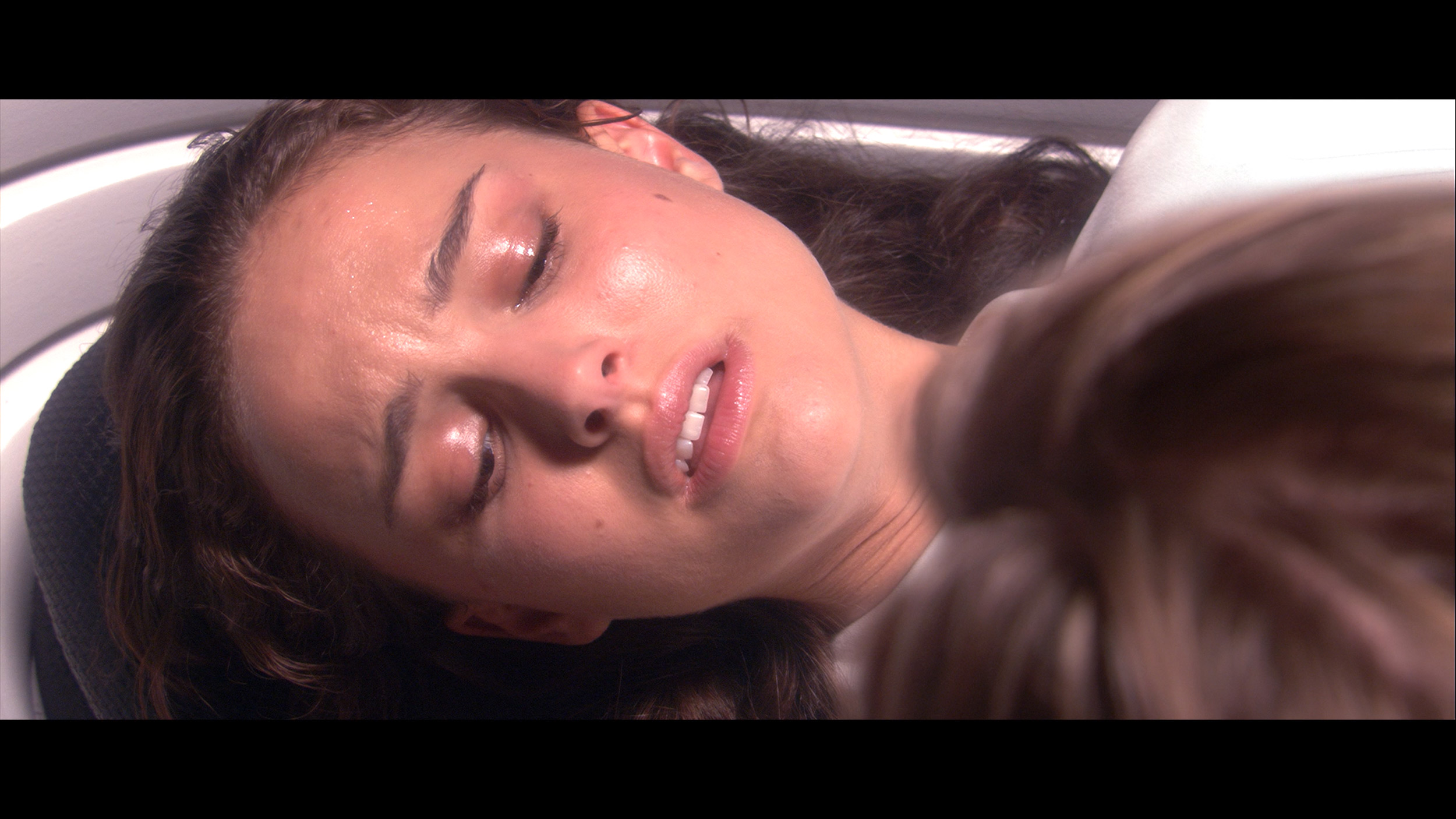

Factory Mode
After calibration
Samsung offers several picture modes in its TVs, but without a doubt, the Filmmaker Mode is the one that should provide the most natural representation of content. Unfortunately, as is often the case with mass production, the differences between units can be significant, and our tested model did not escape a few problems.
In the case of SDR content, the white balance heavily leaned towards red, with a slight boost in blue. This effect was particularly visible in comparison photos – in the example of a photograph with a boy, whose face was almost unnaturally flushed. The gamma, or brightness characteristic, also did not perform perfectly – the image was slightly brightened, which took away its depth.
In 4K HDR content, the white balance was again dominated by red, this time combined with green. Meanwhile, blue clearly lost intensity, which could be easily noticed on the Color Checker palette, where the colors began to "run away" in the wrong direction. The EOTF curve, responsible for brightness in HDR content, showed that the TV tends to excessively brighten the image, especially in the darkest elements of scenes.
Overall, although it did not look tragic, it definitely needed correction. Fortunately, Samsung offers extensive calibration options, which provide an opportunity for significant image improvement. Therefore, we proceeded with professional calibration to extract the full potential of this TV.
A new feature in TCL televisions for 2025 is the long-awaited Filmmaker mode, which until now could be found in most competitive brands. This is great news because this mode is considered the truest to the original vision of the creators and is often recommended by enthusiasts of good image quality. Unfortunately – as is often the case – the mere presence of this feature does not guarantee perfection. The Filmmaker mode in the TCL C7K is not free of flaws. One could point out the incorrect white balance, particularly the slight dominance of blue, which caused cool, somewhat grayish skin tones. But that was not the biggest problem. The main complaint was excessive brightness exposure, which is clearly visible on the gamma and EOTF graphs. The image was simply too bright, at times even blown out, which affected not only the plasticity of the scenes but also the overall viewing experience. Some details simply got lost, and the whole image looked as if someone had overdone it with the brightness slider. As always – we decided to see what could be squeezed out of it after calibration. And this is where things got really interesting...
Color reproduction after calibration
8.1/10
7.5/10

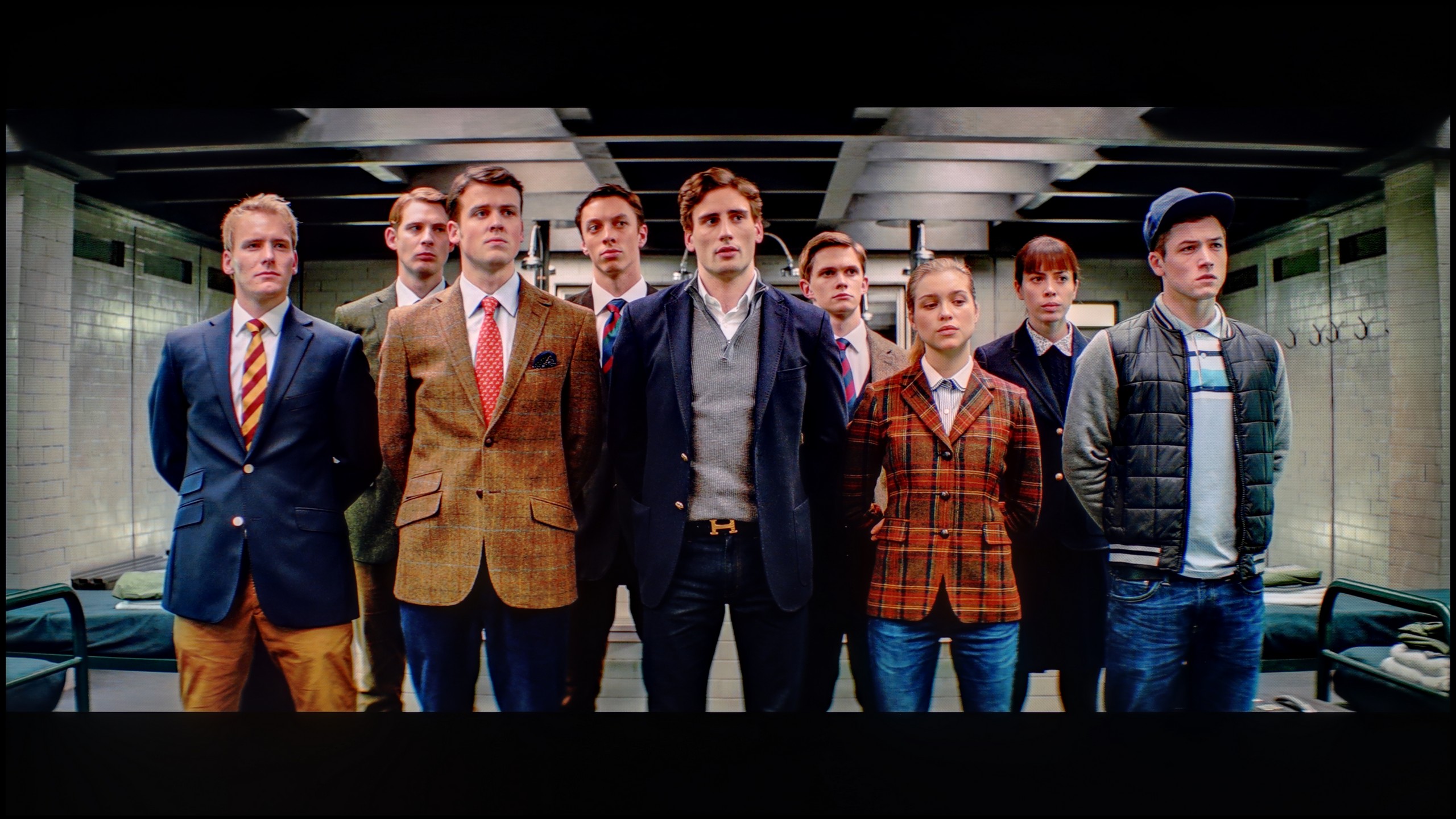


After professional calibration, the Filmmaker Mode shows its full potential. The white balance in HD content is exemplary – an error level of 0.5 indicates almost perfect color reproduction precision. The image now looks natural, and the colors are exactly as they should be. In 4K HDR content, the effect is not as perfect, but it still maintains a really high level. The colors are vibrant, well-saturated, and the overall image quality is impressive.
So where does the problem arise, if we praise the color reproduction so much? Unfortunately, the overall experience is disrupted by the brightness characteristic. The gamma in HD content looks decent, but in 4K HDR it's not as good. The EOTF curve shows that the TV excessively brightens certain parts of the image, which is a result of design limitations. The lack of local dimming means that the TV cannot precisely control the differences between the brightest and darkest areas of the screen. This is a barrier that simply cannot be overcome in this model.
Nevertheless, after calibration, The Frame offers excellent color reproduction, especially in HD content, and the overall appearance is much better than before the settings correction.
After calibration, the TCL C7K showed itself in a really good light, especially when it comes to SDR content. We managed to fine-tune the white balance, color gamut, and brightness characteristics so precisely that color errors on the ColorChecker palette dropped below a value of 2. For the uninitiated – this is an almost perfect result, meaning that the image is very close to what the creators intended. Unfortunately, it was less impressive with 4K HDR content. Although we managed to slightly calm the white balance and correct its earlier errors, it is still evident that the TV has certain "MiniLED traits," especially in managing brightness. When we checked how the C7K performed with the EOTF curve on real movie scenes rather than just synthetic test patterns, it turned out that the screen still has a tendency to slightly brighten the entire image. This affects the overall experience – the black loses some depth, and the image becomes less contrasty than it should be. Despite these minor shortcomings in HDR content, the overall reception of materials – especially in SDR – is really very good. After calibration, the C7K can display an image that can successfully compete with much more expensive models. Good color tuning, natural skin tones, and pleasant brightness make movie sessions and everyday content viewing more than satisfactory.
Smoothness of tonal transitions
9.7/10
8.6/10












This is one of the best TVs we have had the opportunity to test in terms of the smoothness of tonal transitions. Any potential imperfections are so minor that you really have to strain your eyes to notice them. They are subtle enough that we only deducted a symbolic fraction of points in this category. Undoubtedly, this is one of the greatest advantages of this model. It's possible that such a good effect is partly due to the matte coating of the screen, which gently masks any irregularities in color gradation. The smoothness of tonal transitions in The Frame is at a level that will satisfy even exceptionally demanding users. Kudos to the LS03D!
The TCL C7K handles color gradation very well – in most tested scenes, tonal transitions were smooth, and colors blended together without visible contours or artificial “blot” effects. In everyday use, it’s hard to find fault with it – the image looks natural, without irritating transitions or digital artifacts. Some limitations only appear in very dark tones – especially in a heavily muted gray palette, where the TV may struggle to reproduce ideal gradation. But this is absolutely understandable, because even many significantly more expensive models in this range simply give up. Fortunately, these situations are rare and do not significantly affect the overall perception.
Image scaling and smoothness of tonal transitions
7.1/10
5.5/10
Smooth transition function


Image without overscan on the SD signal


It was time to check how The Frame handles older, lower-quality materials. We already know that the smoothness of tonal transitions is very high here, so we were curious to see how the TV would manage their smoothing.
The noise reduction feature in the "Standard" setting performs well – tonal transitions are noticeably smoothed out, and the image does not lose too much detail. However, it's worth noting that this effect also smooths out film grain, so its use will be a matter of individual preference.
When it comes to image scaling, the TV also performed really well. The tested frame was solid – the model was rendered correctly, with clear details. The branches in the background, although slightly jagged in places, generally look natural and do not stand out as a flaw.
The TCL C7K features a function that, according to the manufacturer, is supposed to smooth out unwanted color transitions – something like a rescue for less successful tonal shifts. It's called "Gradual Smoothing" and... well, it sounds ambitious, but in practice, it works very poorly. Regardless of whether we set it to low or high, the difference is minimal. What's worse – the function can remove elements from the image that should remain. Fortunately, film grain remains untouched, so at least it doesn't smooth everything indiscriminately, but still – it's better to just turn this option off.
As for scaling lower-resolution content, it's already better. SD and HD materials look quite decent, though sometimes we had the impression that the image loses sharpness and becomes too soft – as if something took away its clarity. Fortunately, at very low sources (e.g., 576p), there was no overscan effect, meaning the image was not artificially cropped – everything fit on the screen as it should.
Blur and motion smoothness
6.4/10
8.1/10

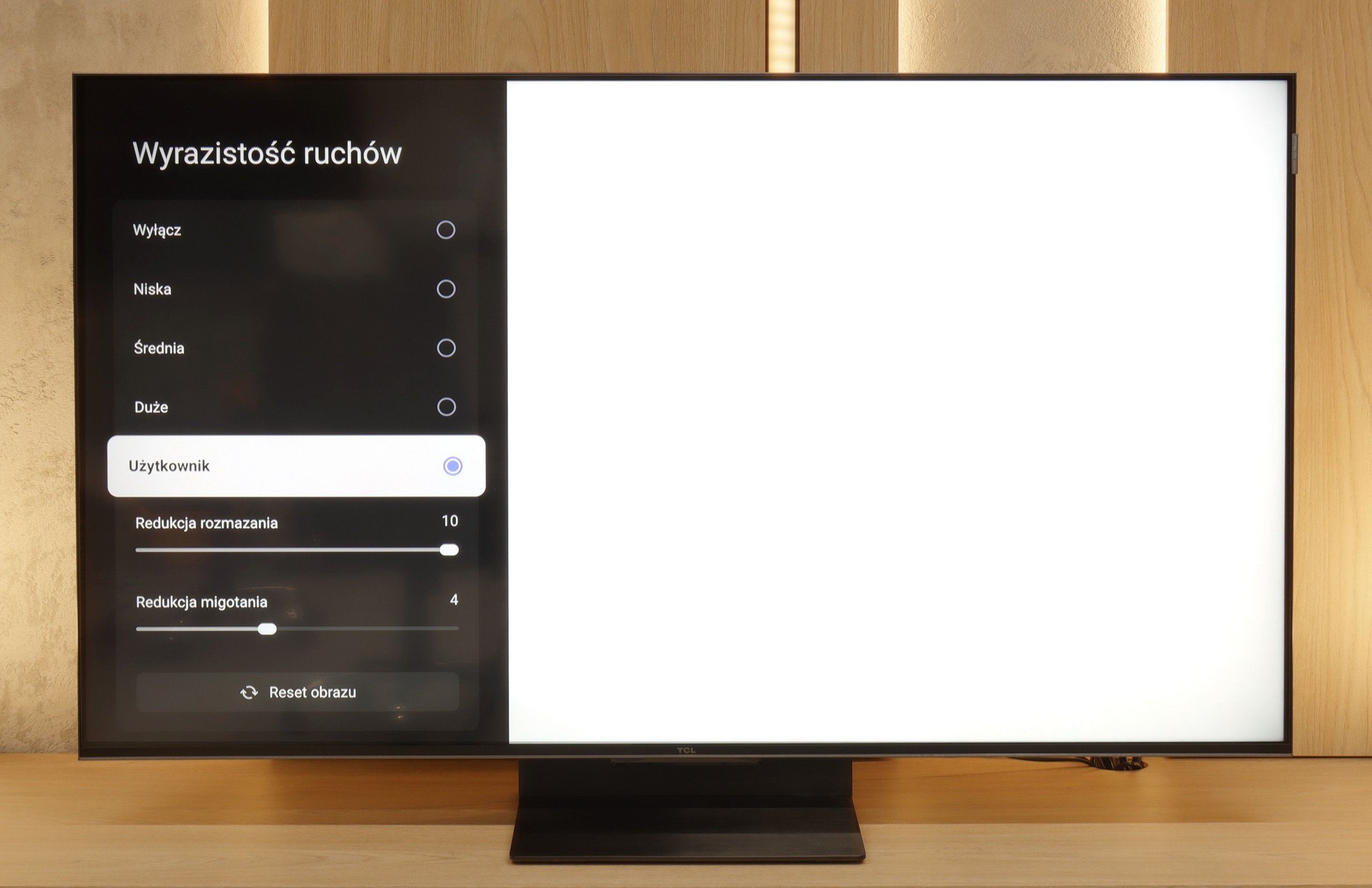
Blur (native resolution, maximum refresh rate):





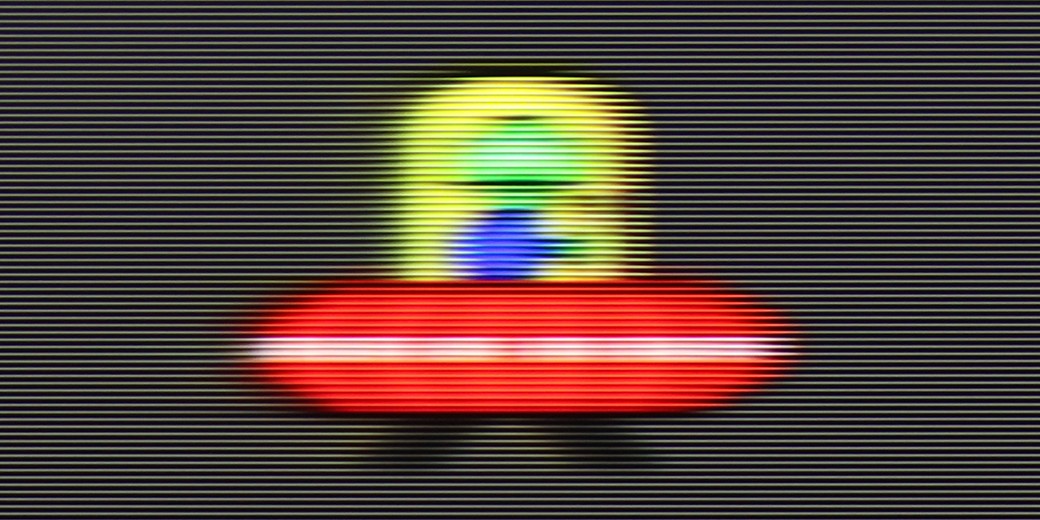
Blur (BFI function enabled):
Image flickers in this mode



Smużenie ():
Smużenie (4K 144Hz):



First of all, it is worth noting that the model we tested in 55 inches, just like the 65, 75, and 85-inch versions, is equipped with a 120 Hz panel. Unfortunately, the 43 and 50-inch variants of this series offer only 60 Hz panels, which is worth considering when making a purchase. As for improving motion fluidity, the TV offers a feature called "Picture Clarity." This is a classic motion smoother that gives users the ability to adjust it using two sliders:
Motion Blurring Reduction – this is responsible for sharpening the image during dynamic scenes. The higher the value, the less blur during rapid camera movement or moving objects. However, overly aggressive settings can make the image look unnatural and start to resemble a “soap opera”.
Judder Reduction – this slider affects the smoothness of frame playback, particularly in materials with a lower frame rate, such as films (24 fps). Higher settings can smooth out motion but can also lead to an excessive "plasticky" effect on the image.
Both sliders operate on a scale from 0 to 10, allowing for precise adjustment of the effect to one’s own preferences. It is worth experimenting with the settings to find the perfect balance between fluidity and the natural appearance of the image. We recommend setting them as shown in the picture.
TCL C7K handles motion smoothness really very well. The matrix used in it offers a refresh rate of 144 Hz, which already suggests that this TV is something more than just an ordinary "60 Hz" panel. Moreover – if we connect the C7K to a computer and set the resolution to Full HD. But we will write more about this in the paragraph about gamers and PC cooperation. Returning to everyday use – both sports and movies look very good here. Thanks to the fast panel and well-functioning motion smoother, the C7K is perfect for watching matches, but also for movie screenings. In the menu, we will find two sliders – blur reduction and flicker reduction – which allow us to adjust the motion smoothness effect to our own preferences. At lower settings, we get a more cinematic effect, with slight frame motion. At higher settings – the image becomes more theatrical, smooth to the point of exaggeration. Everyone can set it to their liking.
Console compatibility and gaming features
8.8/10
9.8/10
- ALLM
- VRR
- VRR range48 - 120Hz48 - 144Hz
- Dolby Vision Game Mode
- Correct implementation of HGIG
- 1080p@120Hz
- 1440p@120Hz
- 4K@120Hz
- Game bar

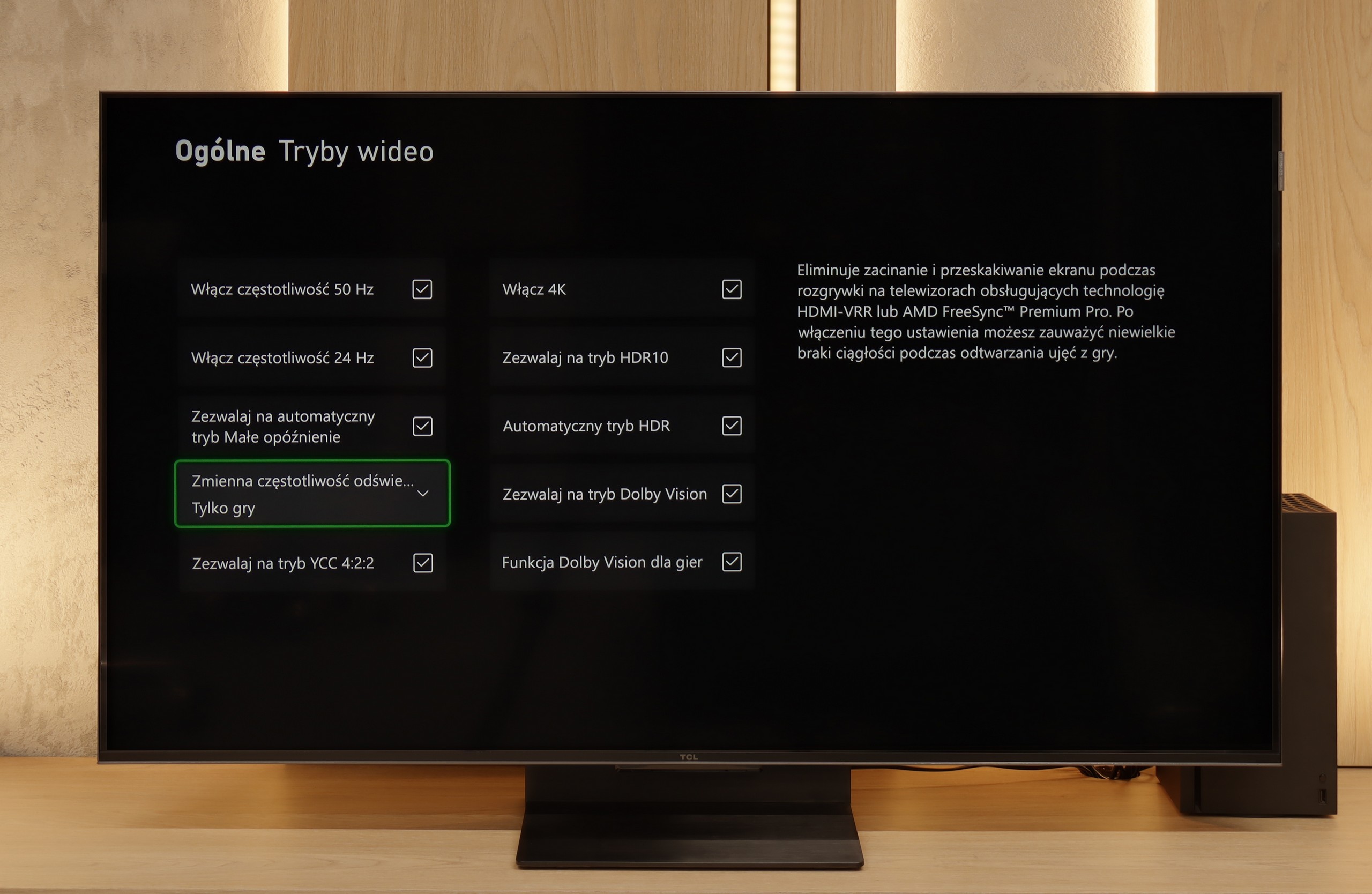

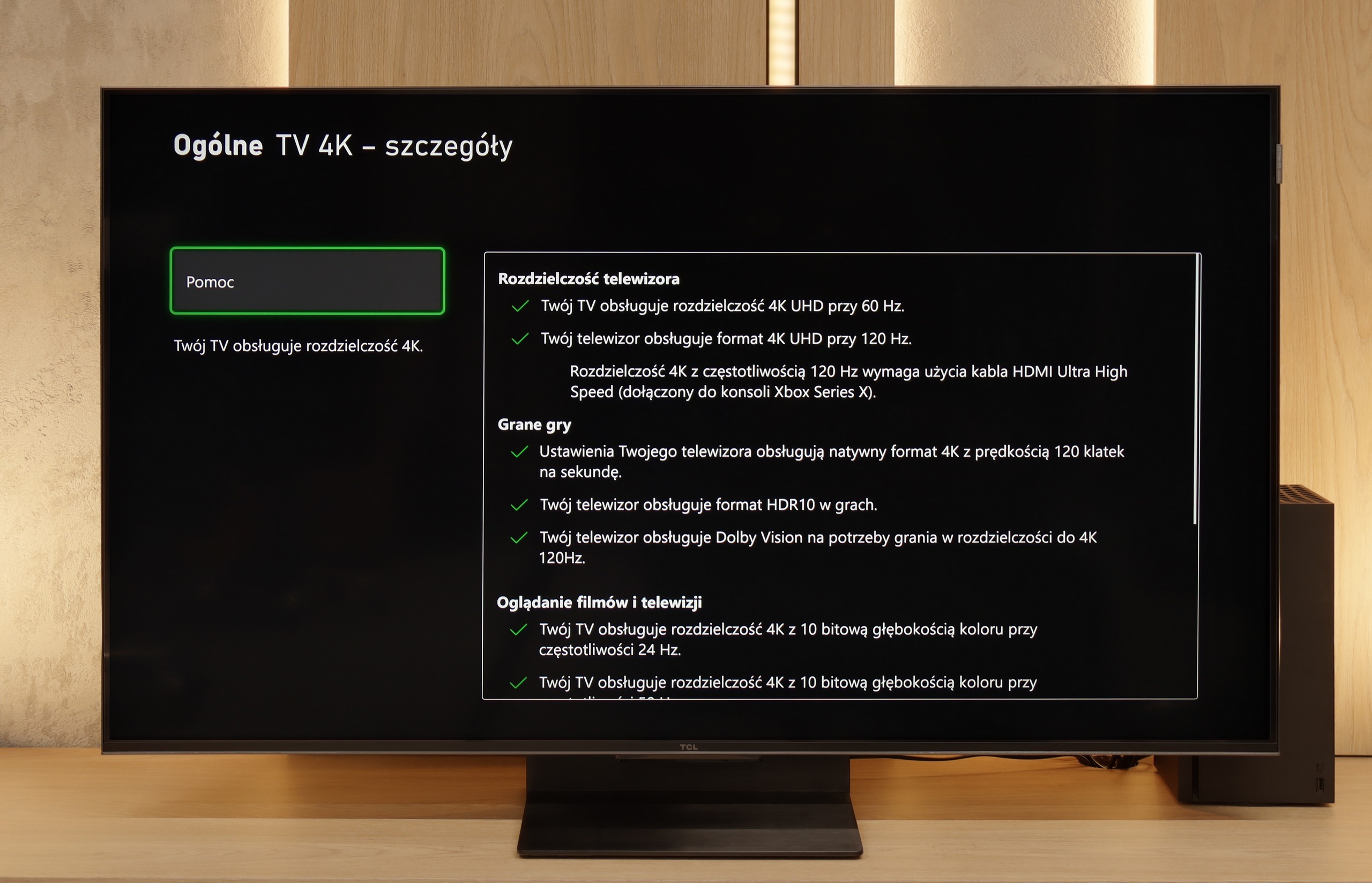

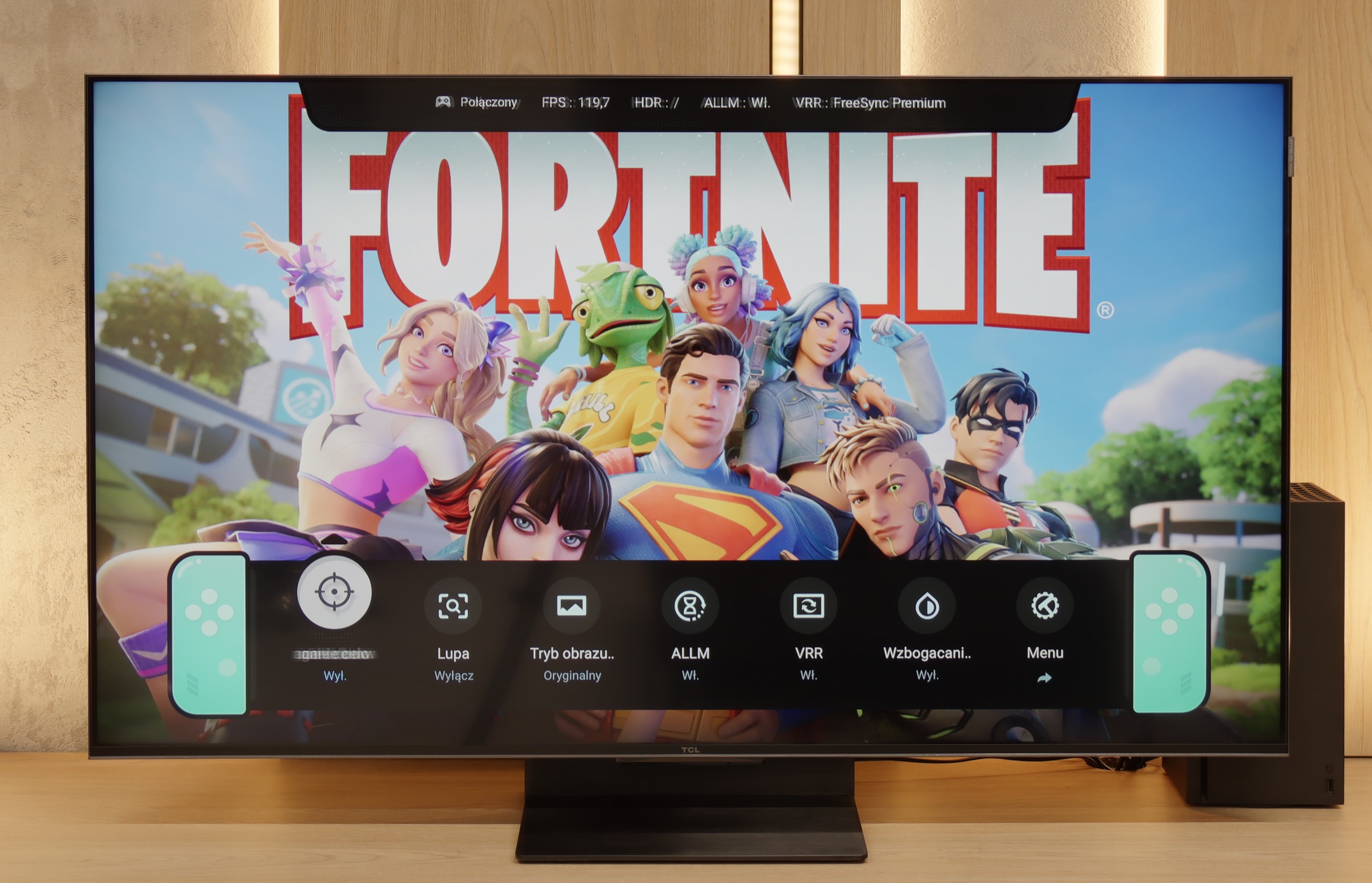

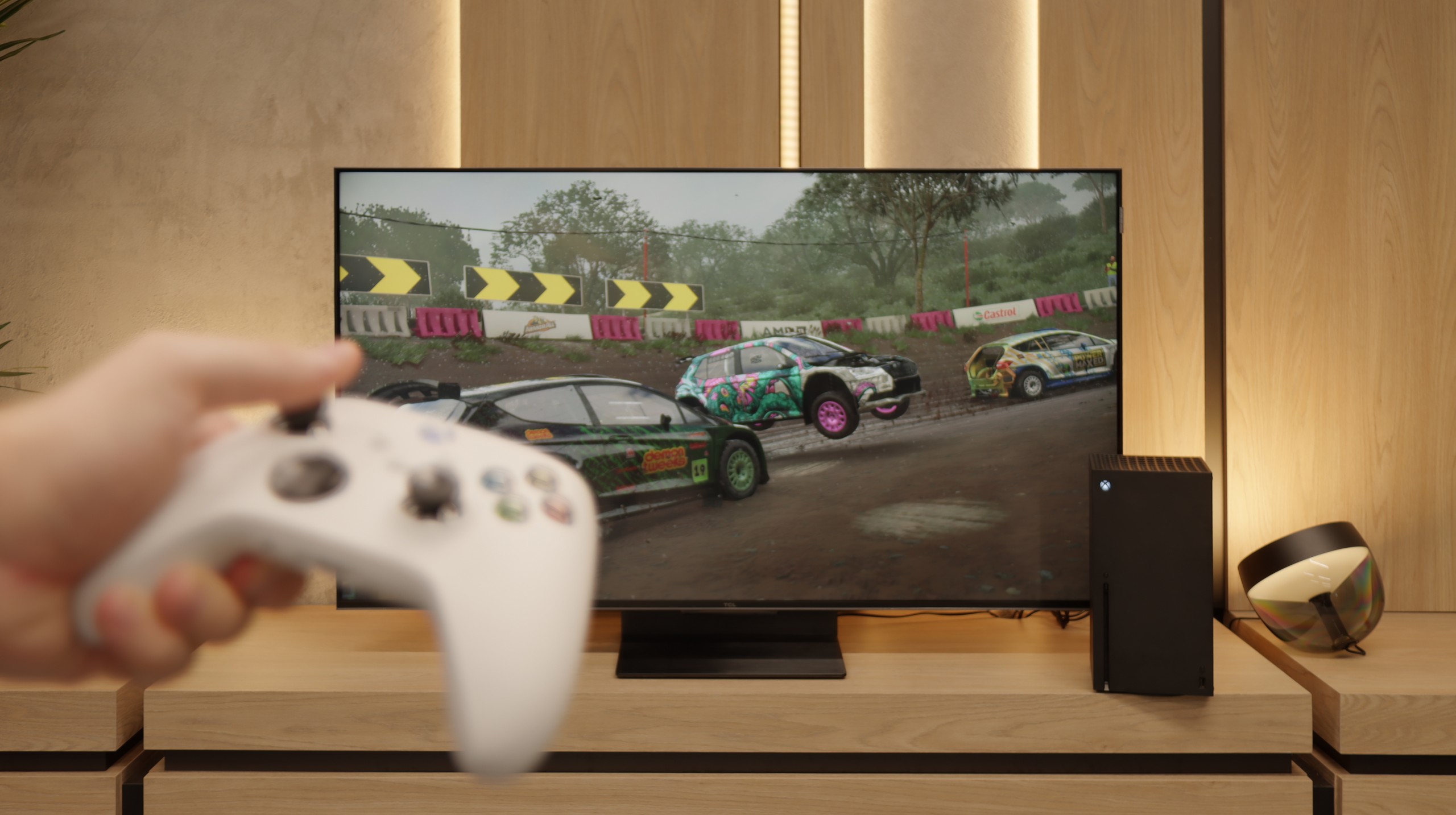
The Frame in version 2024 is equipped with four HDMI ports, but only one of them supports the 2.1 standard with a bandwidth of 40 Gb/s. This is an important piece of information if we plan to connect more than one device that requires a 4K@120 Hz signal – for example, two consoles or a console and a gaming PC. In terms of gaming features, The Frame truly has a lot to offer. We find ALLM (Auto Low Latency Mode), VRR (Variable Refresh Rate), and HGiG. It is worth emphasizing that HGiG has been very well implemented here, which is particularly important since the TV does not support Dolby Vision in games (which is only available on Xbox consoles). In this case, HGiG proves to be a better standard for gaming. Samsung has not forgotten about features that enhance the gaming experience. Game Bar is an advanced panel for gamers that allows for quick adjustment of screen settings without the need to sift through the TV menu. We can even change the aspect ratio from 16:9 to cinematic 21:9, which for some gamers can be a significant advantage. However, Samsung's biggest ace up its sleeve is the Game Motion Plus feature. This is a special smoother dedicated to games, which adds extra frames of animation without significantly impacting input lag. The effect is really noticeable – the image appears much smoother, which fans of dynamic titles will particularly appreciate. In summary – Samsung The Frame is a television that offers a solid set of features for gamers. Although the limitation to one HDMI 2.1 port may be a downside, the rest of the solutions make gaming on this TV a truly enjoyable experience.
TCL C7K is a TV that looks like the dream equipment for gamers on paper – and most importantly, it also performs well in practice. First, the good news: we have two HDMI 2.1 ports with full bandwidth, so we can easily connect both a console and a computer, taking full advantage of their capabilities. The panel itself supports 144 Hz refresh rate, which provides a significant advantage in dynamic games. Additionally, it comes with a full package of gaming features: VRR (Variable Refresh Rate), ALLM (Auto Low Latency Mode), and Dolby Vision support in games. There is also an HGiG mode, which allows for HDR effects that align with the creators' intentions. GameBar, which is an information bar for gamers. It operates quickly, looks clear (like a Nintendo console👌), and shows what’s most important: the current frame count, VRR status, and even HDR parameters.
Input lag
10/10
9.7/10
SDR
HDR
Dolby Vision
In terms of latency, The Frame really impresses. 13 ms with 60 Hz content and 8 ms with 120 Hz are results that will satisfy even the most demanding gamers. Such low values make the reactions to controller movements almost instantaneous. In dynamic games like shooters or racing, every fraction of a second matters – here The Frame performs excellently.
When it comes to delays, the C7K doesn't give any reasons to complain. In games at 120 Hz, the input lag is around 10 ms, which means the television responds really quickly. Interestingly, even in Dolby Vision mode, the result is very similar, which is not always the standard. Good job, TCL. At 60 Hz, the lag obviously increases a bit, but that is completely normal and applies to virtually any television with a refresh rate of 120Hz and higher. The most important thing is that everything still runs smoothly and there is no feeling that something is not responding to our actions.
Compatibility with PC
7.6/10
8.4/10

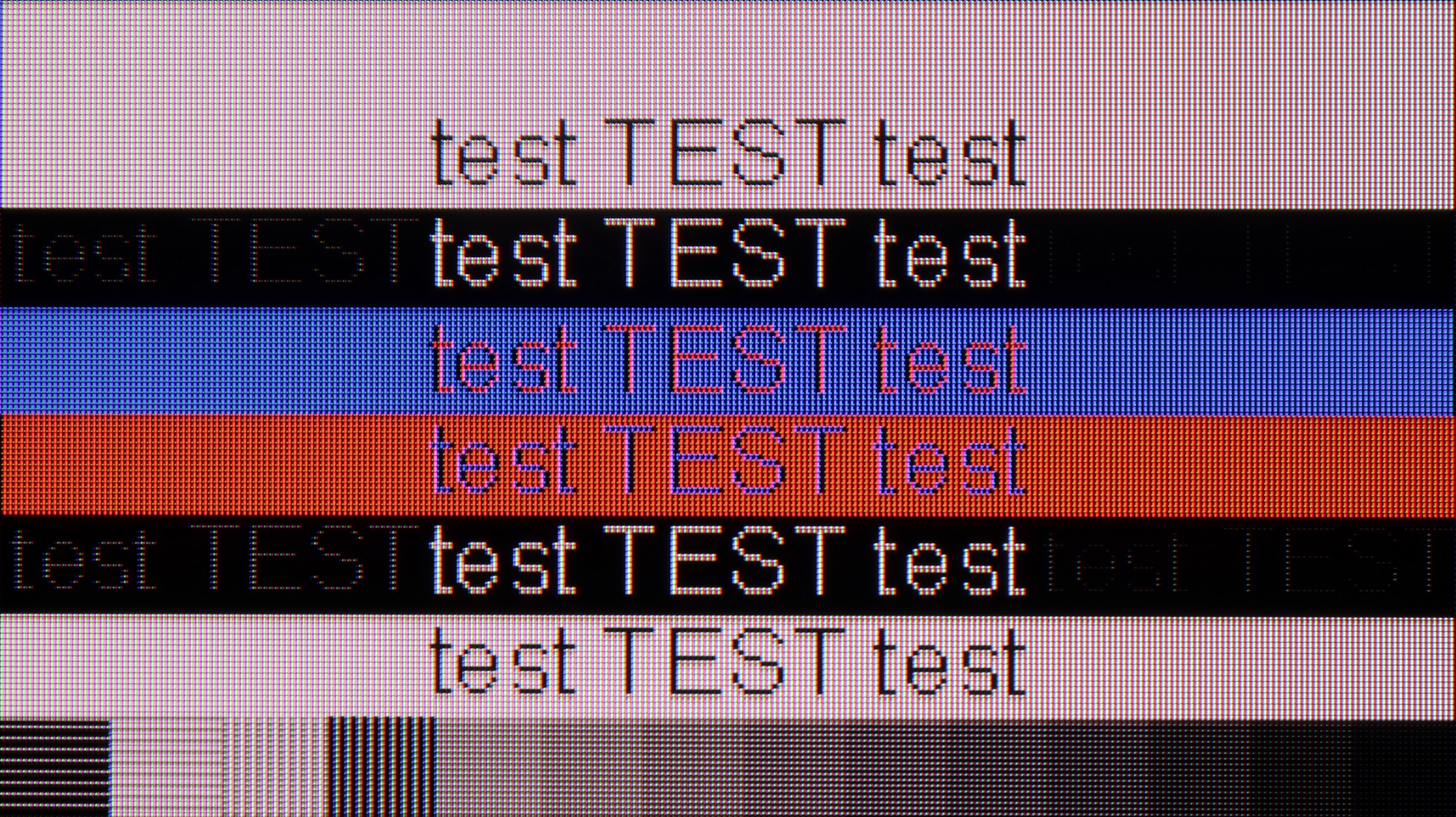
Using a computer on The Frame is truly a pleasant experience. The fonts are clear and well-rendered thanks to the 4:4:4 chroma support. There is no blurring or fuzziness that often appears in cheaper televisions. Of course, if someone scrutinizes small texts, they may notice minimal imperfections, but it's really a minor issue that doesn't interfere with everyday work. It's also suitable for PC gaming. The 120 Hz panel, support for G-Sync, and truly low input lag make games run smoothly and without delays.
If we intend to connect the C7K to a computer – especially for gaming – there’s definitely something to play with. We have 4K at 144 Hz, which sounds great on its own, but if we drop the resolution, the TV can display even 280 Hz. In e-sports, where every fraction of a second counts, this makes a real difference. On top of that, there's support for G-Sync and FreeSync, so regardless of what graphics card we have – the image will be smooth, without any stuttering or tearing.
But if we plan to put the C7K on a desk and use it like a monitor, it’s a little less “rosy.” Sure, it supports chroma 4:4:4, so fonts should be sharp, but with very dark letters, there’s a slight blurring and dimming of the edges. It’s not something that immediately stands out during gaming or watching, but when working with text – it can be distracting. In everyday use – probably without concerns, but if we plan to place a 50-inch screen a meter from our face, it’s worth keeping this in mind.
Viewing angles
3.3/10
3/10
The viewing angles on The Frame are average, which is typical for a VA panel. And here comes a bit of a snag – this television is supposed to serve as a display for images and works of art, which are not always viewed head-on. When viewed at an angle, colors start to lose their intensity, and black turns into shades of gray. This is not at a level that completely ruins the experience, but if the TV is placed in a position where it will often be viewed from the side, the effect may be noticeable. It's a pity because better viewing angles would be a significant advantage in a TV intended for such purposes.
There are no surprises here – the C7K has classic viewing angles for a VA panel. That is: sitting directly in front – it’s great. Colors look good, contrast is strong, everything is in place. But just shifting a little to the side and it starts to get worse – the image loses saturation, blacks turn gray, and the overall impression diminishes a bit. So if we plan to watch together with a few people or have a couch that takes up half the living room – it’s worth seating everyone more centrally. You can watch from the side, but don’t expect miracles – that’s just a characteristic of the VA panel.
TV efficiency during daytime
6.5/10
6.1/10




Matrix brightness
Average luminance SDR
TCL C7K / QM7K 50": 475 cd/m2
Samsung The Frame LS03D : 645 cd/m2
The Frame is equipped with a matte display that manages to effectively suppress direct light reflections. As a result, even in a brightly lit room, the image remains readable, and reflections do not interfere with viewing. Of course, as is usually the case with matte coatings, there is a trade-off – colors lose some intensity, and black seems more faded during the day. Fortunately, the television compensates for this with a brightness level of 650 cd/m². This ensures that the image is bright, clear, and well visible even in a heavily lit room.
Fortunately, the TCL C7K performs quite well in a bright room. The applied matrix has a satin finish that effectively reduces reflections, so even on a sunny day, we don't have to worry about reflections from lamps or windows. Importantly, the colors maintain their intensity and do not wash out, as can happen with weaker matte panels. When it comes to brightness itself, the average for content like YouTube or regular TV is slightly below 500 nits. This is not a record result – for example, the MQLED85 (C765) performs better in this regard. However, for everyday watching during the day, it should work without major issues, as long as we don't plan to place it opposite a south-facing window without curtains.
Details about the matrix
Subpixel Structure:

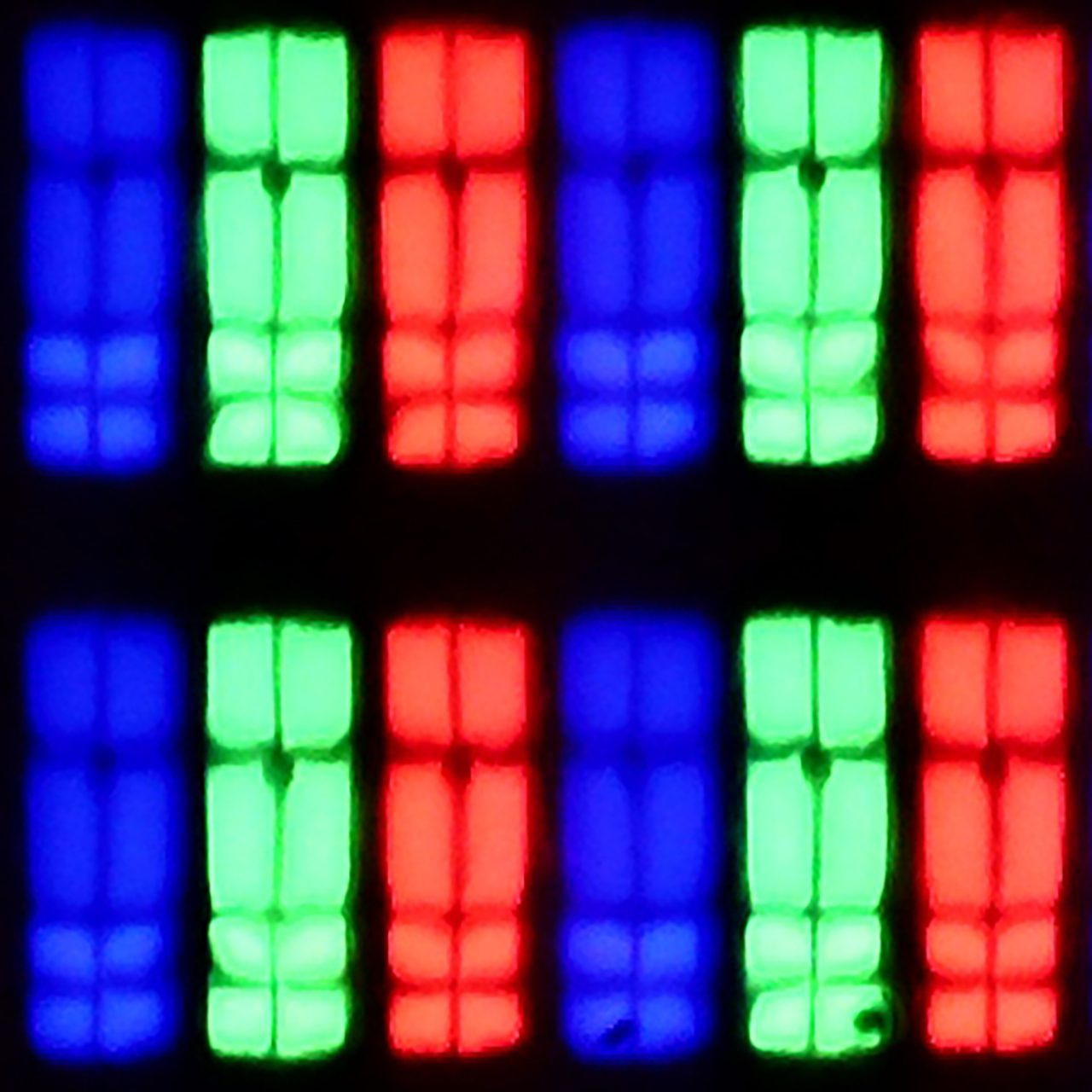
Panel uniformity:

Samsung The Frame LS03D
TCL C7K / QM7K 50"
TV features
7.8/10
7.3/10
- HDMI inputs3 x HDMI 2.0, 1 x HDMI 2.1 40Gbps2 x HDMI 2.0, 2 x HDMI 2.1 48Gbps
- OutputsToslink (Optical audio), eARC (HDMI), ARC (HDMI)Toslink (Optical audio), eARC (HDMI), ARC (HDMI)
- Network InterfacesWi-Fi 2.4GHz, Wi-Fi 5GHz, Ethernet (LAN) 100MbpsWi-Fi 2.4GHz, Wi-Fi 5GHz, Ethernet (LAN) 100Mbps
- TV receptionDVB-T, DVB-T2, DVB-S, DVB-S2, DVB-CDVB-T, DVB-T2, DVB-S, DVB-S2, DVB-C
Classic features:
- Recording to USB (terrestrial TV)
- Recording programming
- Picture in Picture (PiP)
- RF remote control (no need to aim at the screen)
- Backlit remote control
- Teletext
- Audio only mode
- Possibility to connect Bluetooth headphones to the TV
- Possibility to simultaneously use Bluetooth headphones and the TV speaker
Smart features:
- AirPlay
- Screen mirroring (Windows Miracast)
- Wyszukiwanie głosowe
- Voice search in native language
- Ability to connect a keyboard and mouse




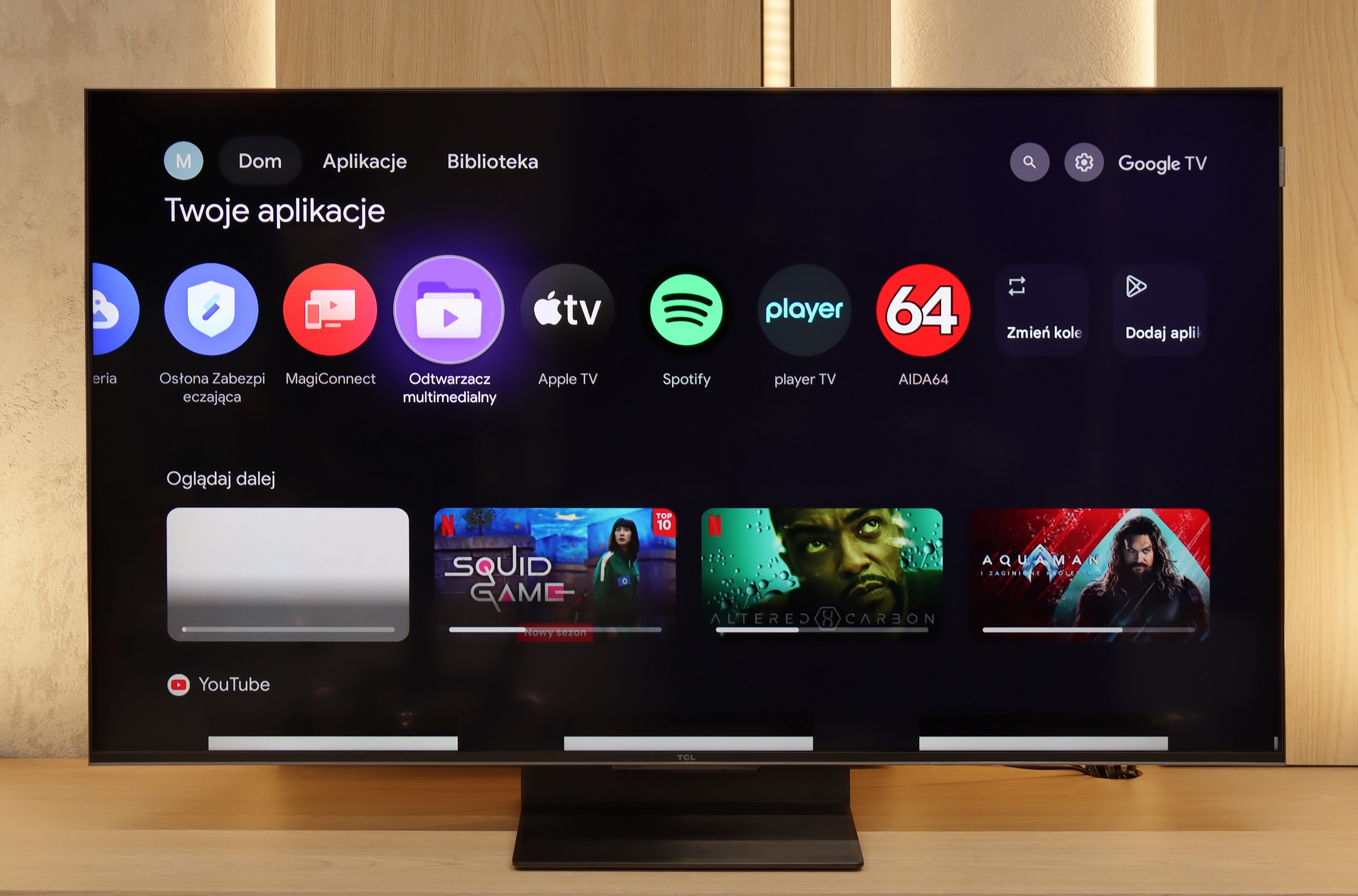
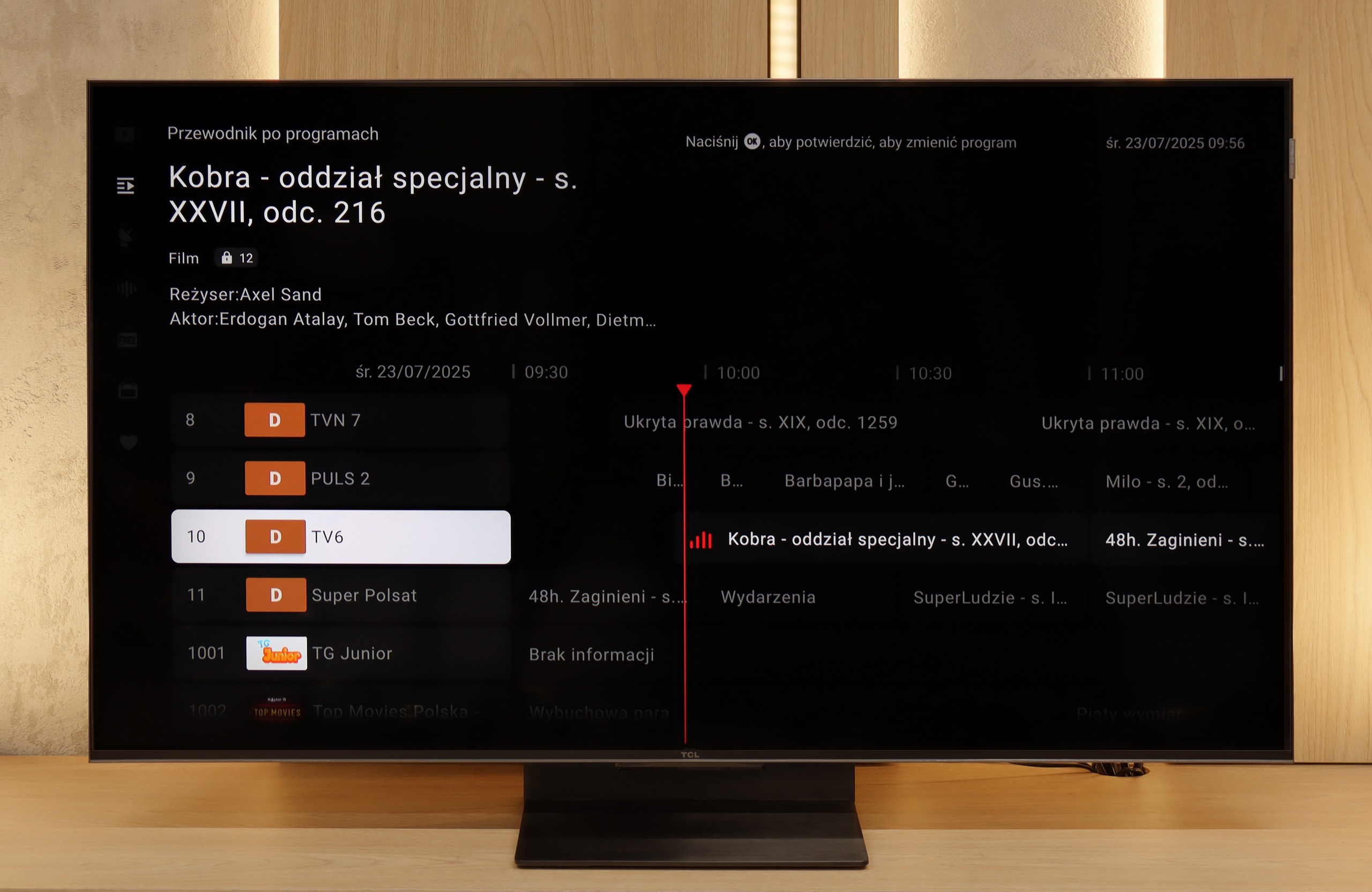
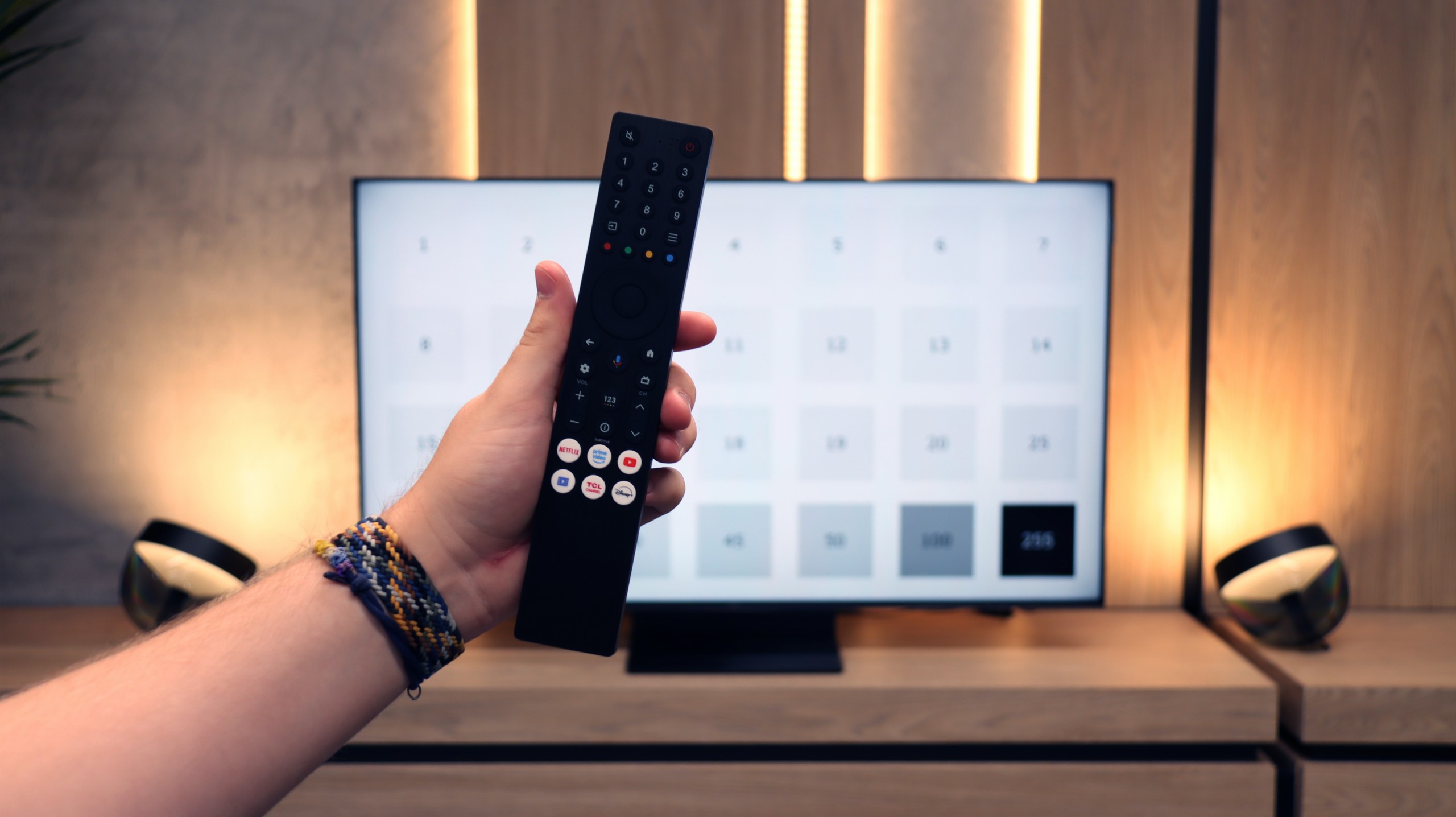
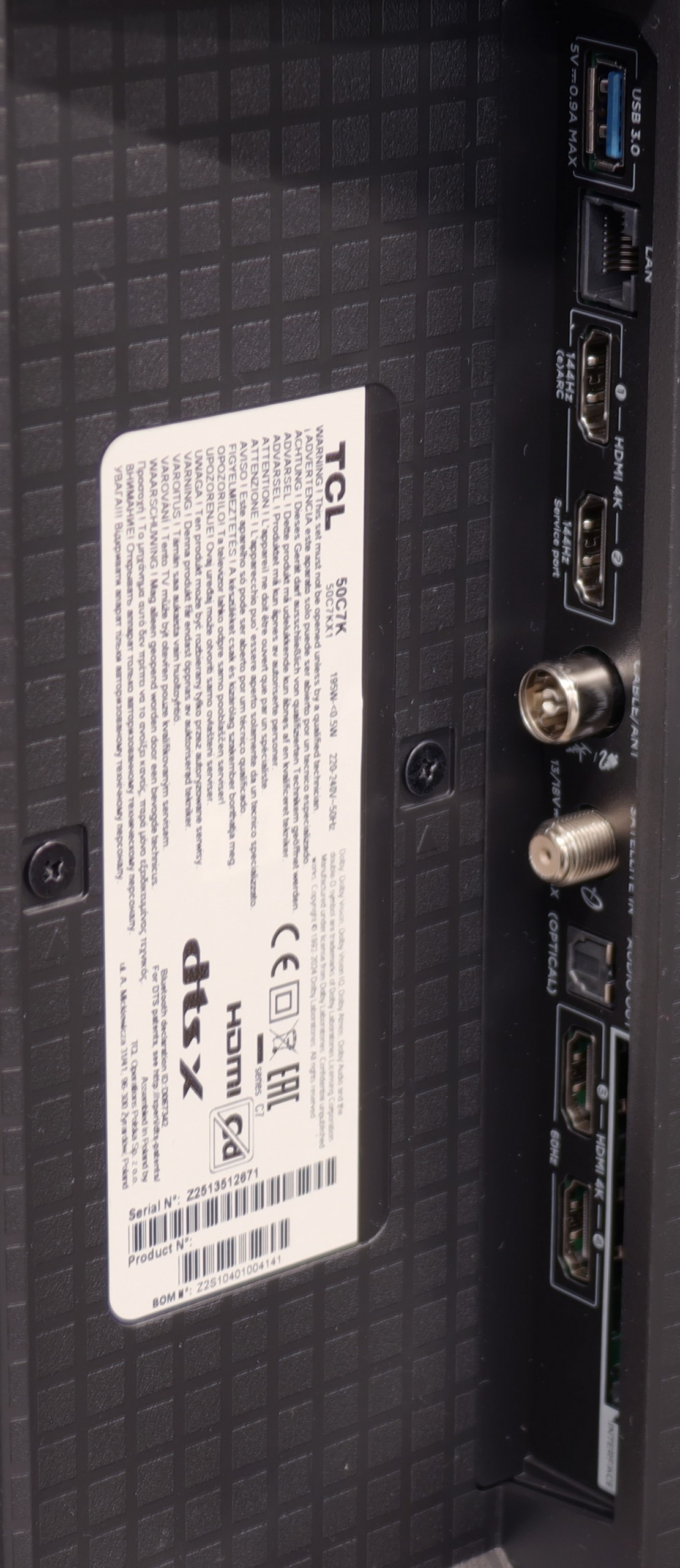
The Frame is a television that stands out from other models and is difficult to describe in a traditional way. Of course, we will find all the standard Smart TV features thanks to the Tizen system. The system works responsively, is extensive, and offers a wide selection of applications. The remote control supports voice commands in Polish, and we can connect additional devices via Bluetooth – just like in many other televisions. But this is not the essence of this model.
The greatest strength of The Frame is its design. The "Art" mode allows you to display thousands of high-resolution images, which, combined with the matte display, look truly exceptional. The effect is surprisingly realistic and hard to compare to any other television.
The frames may not be the thinnest on the market, but they can be customized in terms of color and style to perfectly match the interior. (Sold separately) And although the frames themselves are not ultra-thin, the entire construction is sleek and elegant. The wall mount is also noteworthy, as it is included (its value is around 400 PLN). With it, the television can be mounted almost flush, with no gap from the wall, which further emphasizes the "picture" effect.
And what about the cables? Samsung thought of that too. The Frame is equipped with the One Connect module – an external box to which we connect all devices. Only one nearly invisible cable leads to the television, which transmits both signal and power. The box can be easily hidden in a cabinet or behind furniture, ensuring that nothing disrupts the aesthetics of the interior.
The Frame is more than just an ordinary television – it is a thoughtfully designed decorative element that combines modern Smart TV functionality with exceptional design and practical solutions. Although it lacks typical features like USB recording or PiP, it is not a model created with a classic approach to television in mind. The LS03D is a television that is easy to like for its innovation, originality, and how well it fits into any interior.
SmartTV: GoogleTV
The greatest strength of the TCL C7K in everyday use is undoubtedly the Google TV system. Thanks to it, we have access to an almost endless library of apps, including more niche ones that are often unavailable on other platforms. The built-in Google Assistant understands Polish, so we can easily ask what's on TV, what the weather is like, and even give a few voice commands to control the television. It's also worth noting the presence of Chromecast and AirPlay, which work smoothly and make life easier.
Usability Features
On the downside, the classic features are somewhat lacking. Of course, we find the basics here – teletext, EPG, or the ability to connect headphones – but that's pretty much it. There's a lack of USB recording functionality or picture-in-picture (PiP) mode, which can sometimes still be found with the competition. It's also worth remembering that the Google TV implementation on TCL can sometimes have oddly translated menu sections or minor interface bugs. These are not issues that hinder everyday use, but detail-oriented individuals may notice them.
Playing files from USB
9.1/10
9.2/10
Supported photo formats:
Maximum photo resolution:


The built-in media player in The Frame handles most popular video and audio formats without major issues. Video files, even those with our added subtitles, play smoothly and without interruptions. The same goes for audio files – there are no major surprises here either. The situation is somewhat worse when it comes to photo format support. The built-in player has some limitations and does not support all possible types of graphic files. However, nowadays most people use wireless photo transfer, so this will not be a major problem for many users.
The built-in media player in the TCL C7K performs really well. It supports most popular audio and video formats, so if we want to quickly throw something from a USB drive and play it – there shouldn’t be any problem. Of course, as is usually the case, there are some minor shortcomings – not every exotic codec will work (Apple's HEIC), not all subtitles will be perfectly synchronized (txt.). However, this is where the biggest advantage of this TV comes in, which is Google TV. With access to the Google Play store, we can easily install an alternative player, like VLC, and then no file is intimidating to us.
Apps
8.7/10
9.6/10














































Sound
5.8/10
7/10
- Subjective sound quality:5.8/107/10
- Dolby Digital Plus 7.1:
- Dolby True HD 7.1:
- Dolby Atmos in Dolby Digital Plus (JOC):
- Dolby Atmos in Dolby True HD:
- DTS:X in DTS-HD MA:
- DTS-HD Master Audio:
The sound in The Frame is... well, quite average. The slim design of the television, while impressive, does not provide much space for decent speakers. As a result, the sound is flat and lacking in dynamics – just like most televisions in this category. Samsung is clearly aware of this, as it has a special series S of soundbars in its offer, created specifically for the "lifestyle" line of televisions to which The Frame belongs.
To be honest, we didn't expect much from the sound in the 50-inch version of the C7K model. Usually, in such sizes, it's hard to get anything more than a thin, flat sound. But here – a pleasant surprise. The sound turned out to be really enjoyable, with good clarity and even a slightly perceptible bass. This is probably related to TCL's new collaboration with the Bang & Olufsen brand, which is new for 2025. Whether the C7K actually features original drivers from the Danish premium brand – we can't confirm. But the final effect is still deserving of a plus. For a TV without a soundbar – it sounds quite nice.


